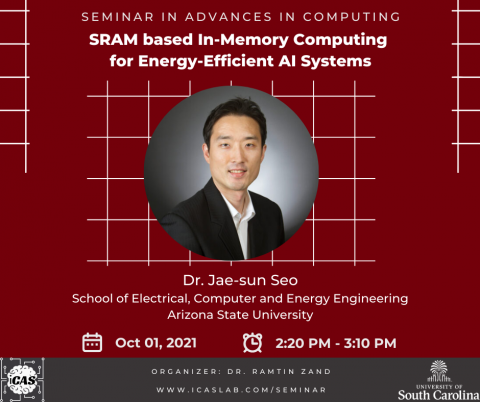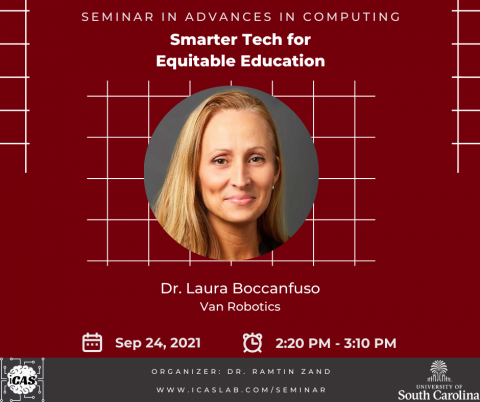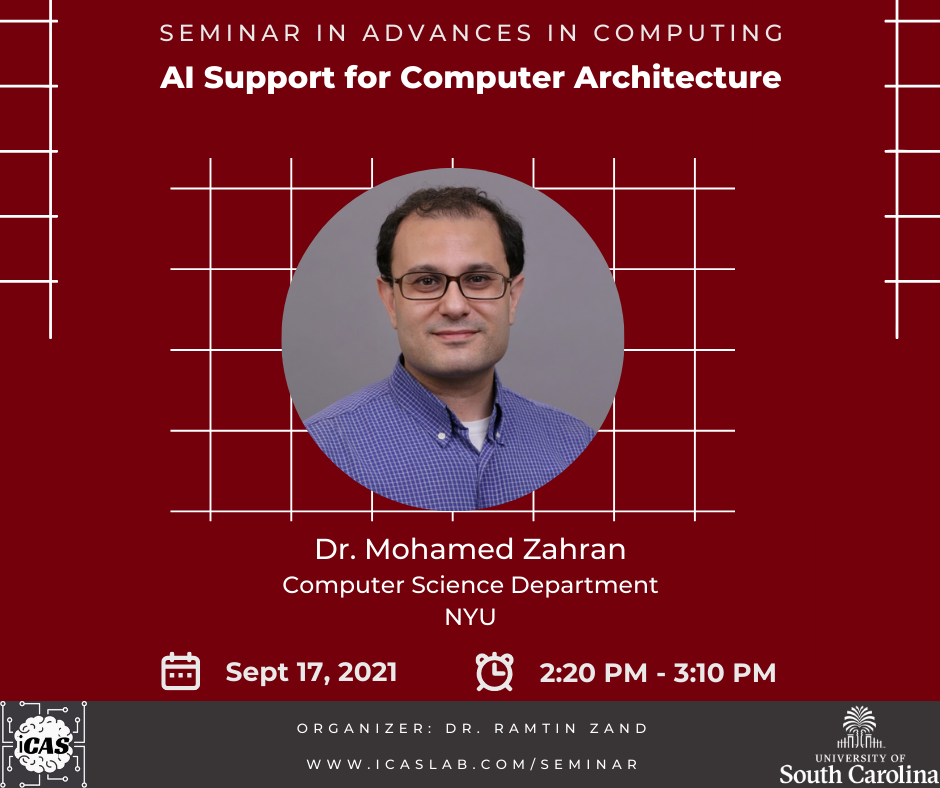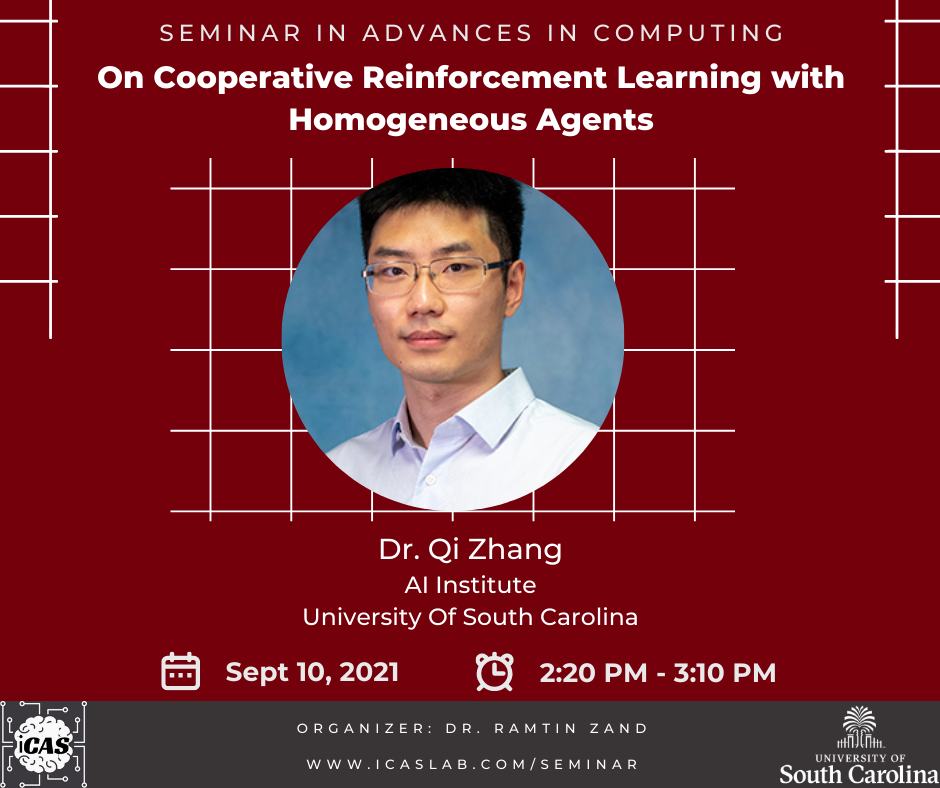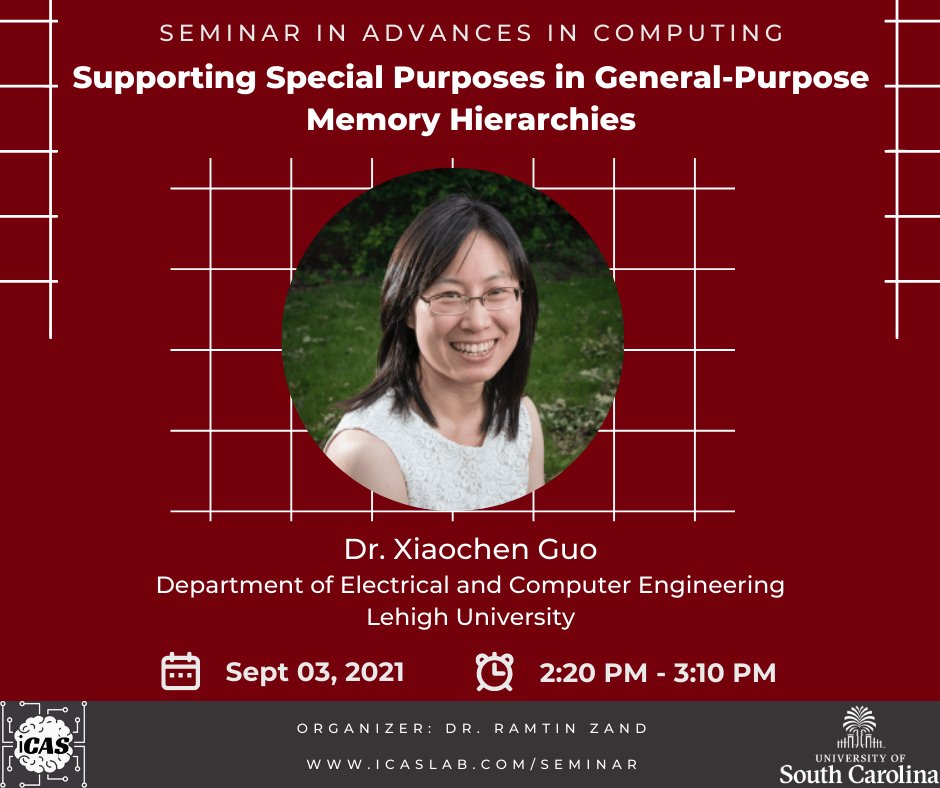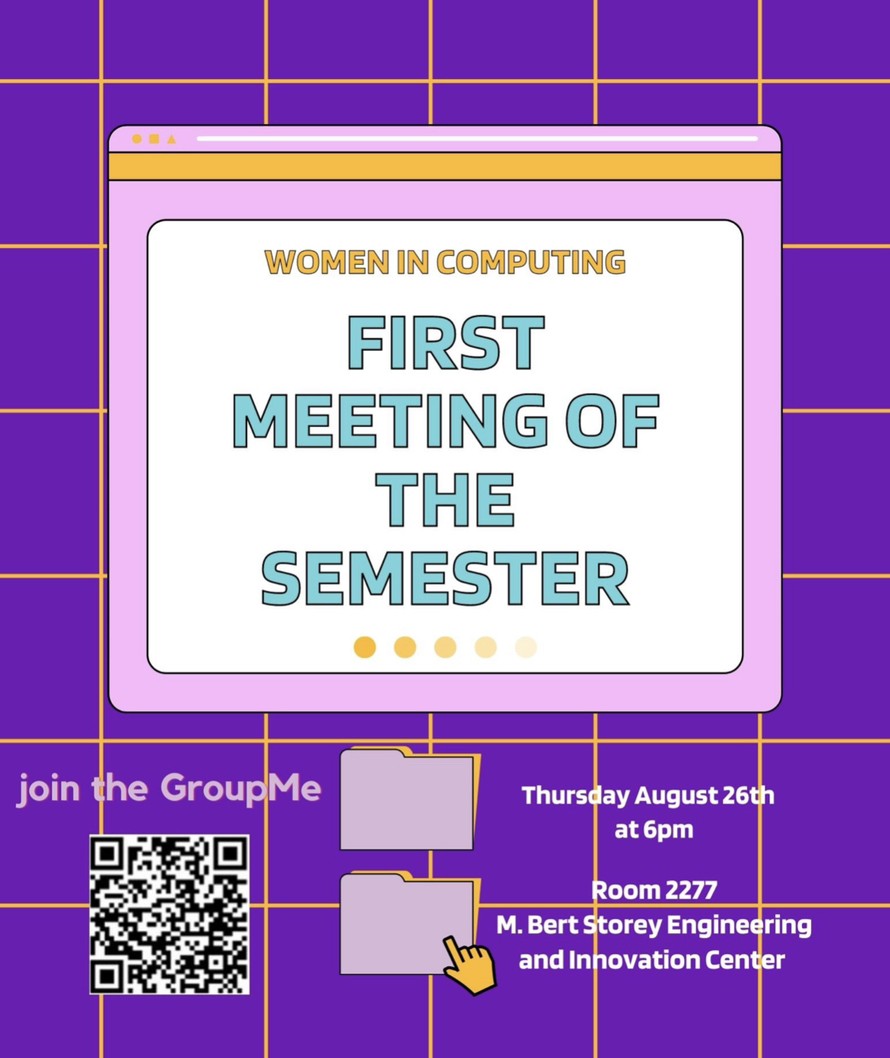Area Coverage Path Planning Problem in Aquatic Environments
- 19 views
DISSERTATION DEFENSE
Department of Computer Science and Engineering
University of South Carolina
Author : Nare Karapetyan
Advisor : Dr. Ioannis Rekleitis
Date : Oct 11, 2021
Time : 12:30pm
Place : Meeting Room 2267, Innovation Center
Abstract
This thesis is motivated by real world problems faced in aquatic environments. It addresses the problem of area coverage path planning with robots - the problem of moving an end-effector of a robot over all available space while avoiding existing obstacles. The problem is considered first in a 2D environment with a single robot for specific environmental monitoring operations, and then with multi-robot systems which is known to be an NP-complete problem. Next we tackle the coverage problem in 3D space - a step towards underwater mapping of shipwrecks, underwater structures, and monitoring of coral reefs.
The first part of this thesis leverages human expertise in river exploration and data collection strategies to automate and optimize environmental monitoring and surveying operations using autonomous surface vehicles (ASVs). In particular, three deterministic algorithms for both partial and complete coverage of a river segment are proposed, providing varying path length, coverage density, and turning patterns. These strategies resulted in increases in accuracy and efficiency compared to human performance. The proposed methods were extensively tested in simulation using maps of real rivers of different shapes and sizes. In addition, to verify their performance in real world operations, the algorithms were deployed successfully on several parts of the Congaree River in South Carolina, USA, resulting in a total of more than 35km of coverage trajectories in the field.
In large scale coverage operations, such as marine exploration or aerial monitoring, single robot approaches are not ideal. The coverage might take not only too long during such operation, but the robot might run out of battery charge before completing coverage. In such scenarios, multi-robot approaches are preferable. Furthermore, several real world vehicles are non-holonomic, but can be modeled using Dubins vehicle kinematics. The second part of this thesis focuses on environmental monitoring of aquatic domains using a team of Autonomous Surface Vehicles (ASVs) that have Dubin vehicles constraint. It is worth noting that both multi-robot coverage and Dubins vehicle coverage are NP-complete problems. As such, we present two heuristics methods based on a variant of the traveling salesman problem---k-TSP---formulation and clustering algorithms that efficiently solve the problem. The proposed methods are tested both in simulations and with a team of ASVs operating on a 200$m$ x 200$m$ lake area to assess their ability to scale and applicability in the real world.
Finally, in the third part, a step towards solving the coverage path planning problem in the 3D environment for surveying underwater structures, employing vision-only navigation strategies, is presented. Given the challenging conditions of the underwater domain it is very complicated to obtain accurate state estimates reliably. Consequently, it is a great challenge to extend known path planning or coverage techniques developed for aerial or ground robot controls. In this work we are investigating a navigation strategy utilizing only vision to assist in covering a complex underwater structure. We propose to use a navigation strategy akin to what a human diver will execute when circumnavigating around a region of interest, in particular when collecting data from a shipwreck. The focus of this work is a step towards enabling the autonomous operation of light-weight robots near underwater wrecks in order to collect data for creating photo-realistic maps and volumetric 3D models while at the same time avoiding collisions. The proposed method uses convolutional neural networks to learn the control commands based on the visual input. We have demonstrated the feasibility of using a system based only on vision to learn specific strategies of navigation with 80% accuracy on the prediction of control commands changes. Experimental results and a detailed overview of the proposed method are discussed.
